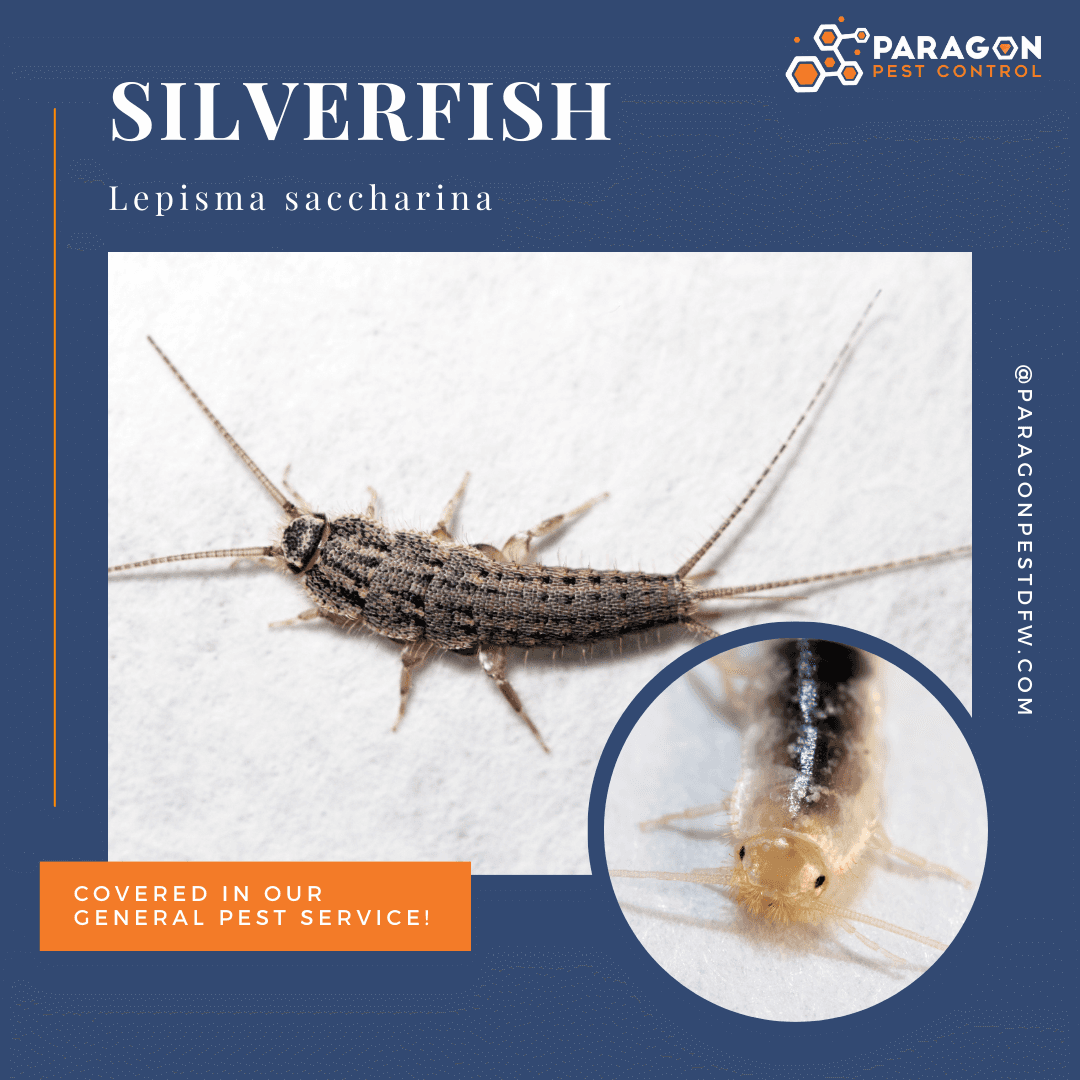Bug Spotlight on Silverfish: Understanding and Controlling These Common Household Pests
In the world of household pests, silverfish often go unnoticed until they become a nuisance. These small, silver-gray insects with elongated bodies are known for their destructive feeding habits and preference for humid environments. In this blog, we will shine a spotlight on silverfish, exploring their behavior, habitat, potential damage, and effective control measures. By understanding these elusive pests, you can take proactive steps to prevent and eliminate silverfish infestations in your home.
Understanding Silverfish
Silverfish, scientifically known as Lepisma saccharina, are primitive insects that have been around for millions of years. They are nocturnal creatures that prefer dark and damp areas, making them commonly found in bathrooms, kitchens, basements, and attics. Despite their name, silverfish do not belong to the fish family but are instead part of the order Zygentoma.
Physical Characteristics
Silverfish have a distinct appearance that sets them apart from other household pests. Here are some key physical characteristics of silverfish:
Size: Adult silverfish typically measure around ½ to ¾ inch in length, excluding their antennae and tail-like appendages.
Color: They have a silver-gray body color, with a metallic sheen that gives them their name.
Shape: Silverfish have elongated bodies that are covered in scales, giving them a fish-like appearance.
Antennae: They have long, thread-like antennae on their head.
Behavior and Habitat
Silverfish are nocturnal insects that prefer dark and humid environments. They are fast runners and move in a fish-like manner, hence their name. Here are some important behavior and habitat traits of silverfish:
Diet: Silverfish are omnivorous and feed on a variety of organic materials, including carbohydrates, sugars, starches, book bindings, paper, clothing, and even dead insects. They can survive for months without food.
Habitat: Silverfish thrive in damp and humid areas with moderate temperatures. They are commonly found in bathrooms, kitchens, basements, attics, and crawl spaces, where they seek moisture and food sources.
Potential Damage
While silverfish do not pose significant health risks to humans, they can cause damage to personal belongings and property. Here are some potential issues associated with silverfish infestations:
- Paper and Book Damage: Silverfish have a particular appetite for paper, books, and cardboard. Their feeding habits can result in irreparable damage to important documents, books, and cherished possessions.
- Clothing and Fabric Damage: Silverfish are attracted to fabrics made from natural materials, such as cotton, linen, silk, and rayon. They may leave small holes or irregular patches of damage on clothing, curtains, upholstery, and other fabric items.
- Contamination: Silverfish can contaminate food items stored in infested areas, making them unsuitable for consumption.
Effective Control Measures
Preventing and controlling silverfish infestations requires a combination of proactive measures and targeted treatments. Here are some effective strategies for managing silverfish:
- Moisture Control: Silverfish thrive in humid environments, so reducing moisture levels in your home is key. Fix any leaks, improve ventilation, and use dehumidifiers in areas prone to dampness.
- Eliminate Food Sources: Store food items in airtight containers, remove clutter, and regularly clean up crumbs and spills to deprive silverfish of their food sources.
- Sealing Entry Points: Seal cracks, gaps, and openings around windows, doors, pipes, and utility lines to prevent silverfish from entering your home.
- Professional Pest Control: If you have a severe silverfish infestation or need expert assistance, it is advisable to seek professional pest control services. Pest control professionals have the knowledge, experience, and tools to effectively eliminate silverfish and implement long-term control strategies.
Understanding the behavior, habitat, and potential damage caused by silverfish is crucial for effective control and prevention. By implementing moisture control measures, eliminating food sources, and sealing entry points, you can reduce the risk of silverfish infestations. Remember, if you're dealing with a severe infestation or need professional assistance, it's best to consult with a trusted pest control provider, like Paragon Pest Control.
Take a proactive approach to protect your home from silverfish and other household pests. With the right knowledge and control measures, you can ensure a silverfish-free environment and safeguard your belongings.


